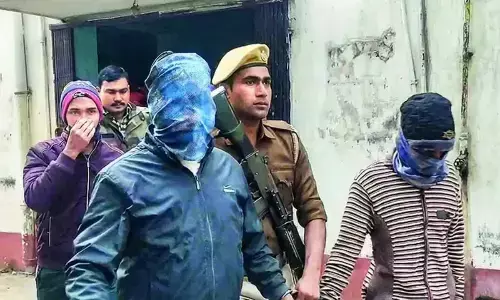India’s Cities Are Yearning To Breathe Better

Itis a winter of discords, and despair, too, every year for Del-hiites. Why it’s more in winter? Cold air is denser and moves slower than warm air; thus, it traps pollutants and doesn’t whisk it away.
Itis a winter of discords, and despair, too, every year for Del-hiites. Why it’s more in winter? Cold air is denser and moves slower than warm air; thus, it traps pollutants and doesn’t whisk it away. In winter, the air quality Index (AQI) in Delhi shoots up above 499 at some places, marking a “severe plus” on India’s System of Air Quality Forecasting and Research (SAFAR) scale. It is considered “hazardous” as per the US AQI standards. Gov-ernment takes several measures such as declaring holidays for schools, banning construction for particular periods, installing anti-smog guns, introducing odd-even number system for eas-ing traffic density on roads etc – all to prevent illnesses among the people.
With air pollution levels turning severe plus, the Commission for Air Quality Management has implemented Stage 4 of the Graded Response Action Plan (GRAP), whereby strictest emer-gency measures kicked in, such as school holidays, construction ban, advising employers to shift 50% of their work online, bar-ring all trucks, and except those carrying essential items, from entering Delhi. Any level above 300 is considered hazardous as per international AQI norms. Many parts of Delhi recorded an AQI of more than 600 last month. Every winter, several factors, including farm waste burning in neighbouring states of Haryana and Punjab, burning of fireworks, construction waste, and in-creasing vehicles on the roads add up to turn Delhi into a sort of gas chamber.
Last month, the Supreme Court reprimanded the Delhi gov-ernment for letting things go out of control. It even asked the Central government to share real-time satellite data to pinpoint the causes for the pollution spike. A month later, on December 16, the apex court again took stock of the situation. This time, it said it would expand the scope of a Public Interest Litigation (PIL) to other areas and states outside the National Capital Re-gion (NCR).
What’s more, the highest court of the land noted that the air pollution is a pan-India problem and asked the Central govern-ment for a list of highly polluted cities. This should hearten those people suffering in other cities reeling under the adverse impacts of air pollution. The court observation that there is a need for all governments to set up the Commission for Air Qual-ity Management (CAQM) is highly laudatory. It should make them mandatory across the country, so the lax state govern-ments will act for better air quality monitoring as well as man-agement in troublesome areas.
One wishes fervently that the apex court expands its interven-tion in the air pollution matter to states across the country, and not merely to those outside the NCR. Pollution not only affects public health, it also takes a toll on economic growth. It causes higher absenteeism in offices, reduces labour productivity, causes spurt in respiratory illnesses, increases healthcare costs, and leads to premature deaths. As construction bans are im-posed, lakhs of migrant labour who flock to cities to escape ru-ral distress are deprived of livelihoods, and are forced to lead miserable lives. Experts reckon that worsening pollution levels could reduce GDP as much as by 3% or $95 billion. It also scares away prospective investors, or deters expansion in brownfield projects.
Whether or not the Supreme Court prods, or even issues any diktat, the state governments should wake up from their slum-ber, and set about bringing air quality levels to safe levels. The benefits are enormous in terms of removing negative impact on educational institutions, offices and economic activities such as construction and transport sectors. It should worry all that In-dia’s susceptibility of air pollution increases every year, taking a toll on health, or even lives, of millions. The governments should not wait for the Supreme Court to ‘clear the air’ for the better.















